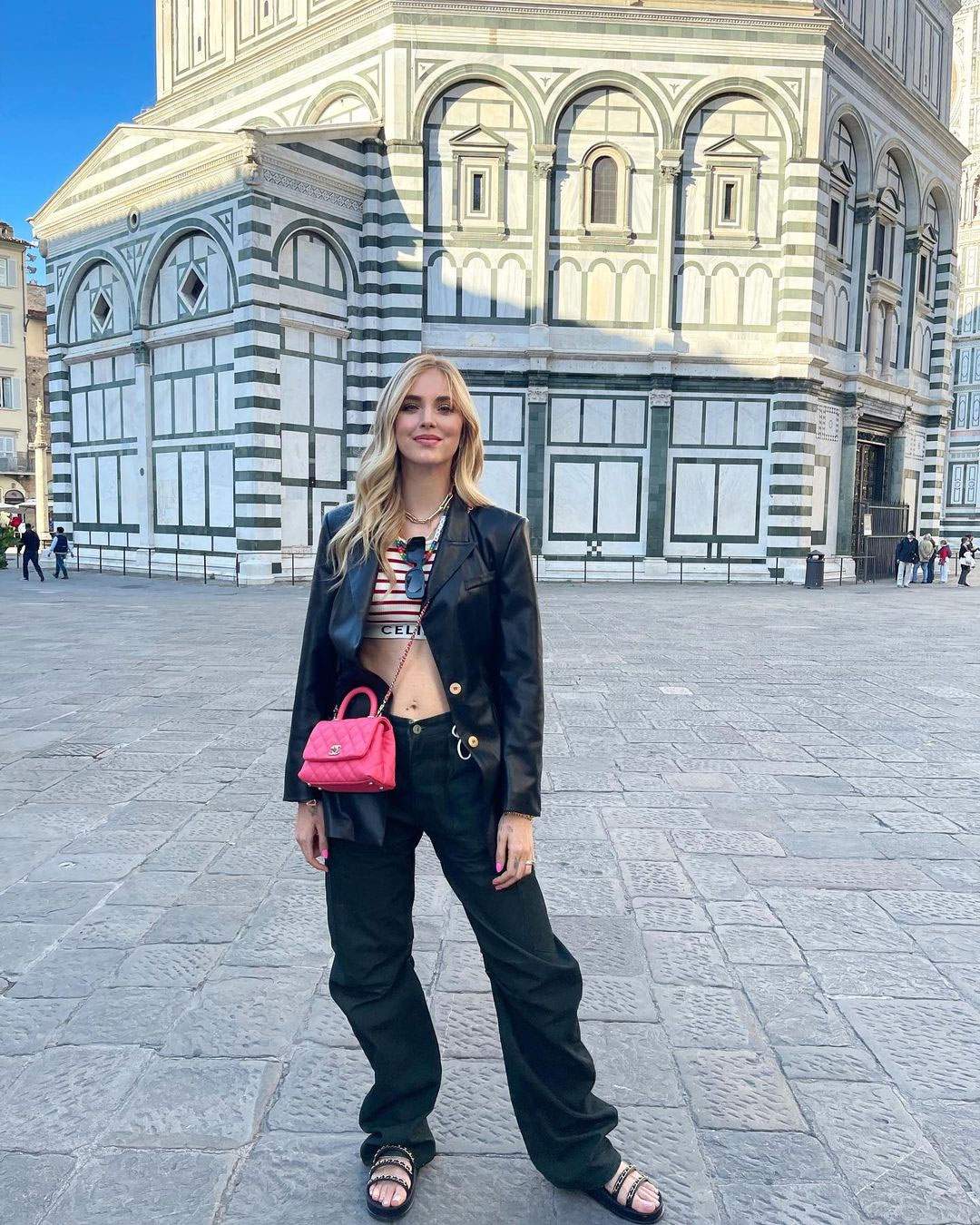Florence wants to relaunch its museums with Chiara Ferragni? And... is she doing it right?
By now it is common knowledge: Chiara Ferragni visited Florence once again and posed together with the director of the Uffizi, Eike Schmidt, but this time at the Pitti Palace, where there was no shortage of customary selfies, posed photographs in the most “photogenic” rooms of the ancient Medici palace, and all the apparatus that usually the blonde influencer from Cremona shows off on her social accounts, starting with Instagram.
However, the novelty lies in the fact that, at this turn, the visit had a decidedly more institutional character than the one (moreover, much more discussed and talked about: but it was still a first) that Ferragni made to the Uffizi in July 2020. Back then, the reason was a photo shoot by Michal Pudelka for Vogue Hong Kong magazine, which paid the Uffizi the necessary fees for the occupation of the rooms (which were not disclosed): however, the occasion was useful to launch a discussion on the possible importance of influencers in promoting our cultural heritage (it has been discussed at length on these pages as well). It was a debate that resulted in a stark contrast: on the one hand, those who consider the approach excessively trivializing (the “puzzalnasists,” as Schmidt called them in the midst of the wave of criticism) and on the other hand, those who think that the new digital entrepreneurs can really be useful to the cause.
The visit at the end of May, however, did not stem from Chiara Ferragni’s work-related reasons, and what’s more, this time the mayor of Florence, Dario Nardella, also made a move, receiving the influencer with all the appropriate honors (and he, too, did not miss a photograph with the entrepreneur), along with the councilor for culture Tommaso Sacchi. In fact, Ferragni did not limit herself to visiting the Pitti Palace: her Florentine tour this time was longer and touched some well-known monuments (such as the Baptistery, the Duomo, Ponte Vecchio) and also some hidden gems, such as the Bardini Museum, whose name, for a few days, has been in the headlines. Enthusiasts are therefore quick to point out that there are probably now many more people who know about the Bardini Museum, which has been able to benefit from the media and social resonance of Chiara Ferragni’s name.
All the more so in this pandemic period, with museums that have been closed for a long time and therefore are in great need of revitalization, not least because the numbers, despite the reopenings, are nowhere near pre-Covid levels. And it is interesting to note that, among the myriad comments from Instagram users extolling Chiara Ferragni’s beauty and in some cases that of Florence, there is also one from the Benozzo Gozzoli Museum in Castelfiorentino who writes, “How nice it would be if you came to us too.”
Of course, many also criticize the frivolity of the posts accompanying the photographs, as Ferragni does not comment on the monuments she offers to her audience. And the same goes for what Dario Nardella wrote on social media, who merely wrote on his Facebook page, “Today Chiara Ferragni came to visit us and together we visited the Bardini Museum and Palazzo Pitti. As tradition dictates, we stroked the snout of the Little Pig as a sign of good omen for the future. Thank you Chiara, we look forward to seeing you again with your family!”
The mayor therefore did not at first give the reasons for Chiara Ferragni’s visit, but then, also overwhelmed by criticism, he had to defend himself before the citizens: “I find the criticism about Chiara Ferragni’s visit to Florence unfair,” he commented. “Personally, I do not understand why a well-known person cannot come to our city and tell about it on their social channels. I would like to thank Chiara for promoting Florence and for choosing to visit one of our lesser-known museums like the Bardini Museum. Especially at a time like this, social networks are an effective promotional tool for culture, especially with regard to young people. The boom in visitors to the Uffizi, Palazzo Pitti and civic museums are clear proof of this. Being a historic city cannot be synonymous only with defending traditional canons of storytelling, but must be a starting point to also question the ways and language with which beauty is told. Florence has been great whenever it has been contemporary, even in communication.”
In short, does theinfluencer pull? The topic continues to be a source of great discussion, and influencers continue to visit museums: even Chiara Ferragni’s sister Valentina was filmed in front of the Brescia Castle last week, thus thanked by the Brescia Musei Foundation for her visit. Are these quick forays destined to multiply? Will we hear more about our monuments and museums thanks to influencers? Do influencers, then, work to promote heritage?
 |
| Florence wants to relaunch its museums with Chiara Ferragni? And... is she doing it right? |
Warning: the translation into English of the original Italian article was created using automatic tools. We undertake to review all articles, but we do not guarantee the total absence of inaccuracies in the translation due to the program. You can find the original by clicking on the ITA button. If you find any mistake,please contact us.





























